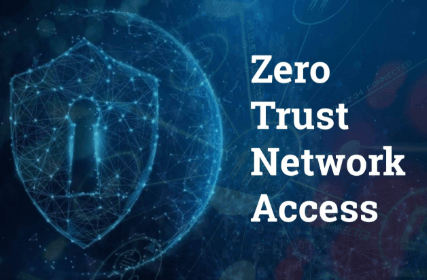Adoption of Zero Trust Network Access can therefore help organizations to boost their networking infrastructure in repelling cyber threats so as to prevent unauthorized personnel, data breaches, as well as insider threats. Traditionally, models of security assume that users within the network can be trusted in that to bear. That’s what leaves their businesses exposed to all sorts of attacks. Zero Trust Network Access will ensure that everyone, as well as every end-user before he gains access to critical systems, is verified continuously, thus taking away the space for security gaps. With regard to strong networks, building a digital infrastructure with integrated Zero Trust Network Access can create an extensible, resilient, and most importantly secure environment against sensitive risk and subsequently allow smooth operation and revenue. Zero Trust Network Access, which hinges on new advanced networking technologies, offers thorough security to cover all endpoints and applications.
Challenges posed by Conventional Network Defenses
Old-style network security comprises firewall, VPN, and perimeter-based defenses, which have long been considered inadequate against modern cyber threats. Certainly, with the advent of the distributed systems of cloud computing, remote working, and Internet of Things devices, such measures are limiting organizations in their bid to secure authorized access to their networks since external access has become highly difficult to prevent for unauthorized users such as attackers. Weak authentication, poor old security settings, and insufficient monitoring can now be exploited for injecting into a company’s network by most attackers. Phishing, ransomware, DDoS attacks, and many others represent the growing threats to business continuity. Without proactivity in security measures, organizations gulp sensitive data and fall victim to compliance violations and financial loss.
Improving Network Security by Zero Trust Network Access
Zero Trust Network Access does mention “never trust and always verify” as a model. Trust given in traditional ways, according to a location or network boundaries, changes to continuous user authentication and device authentication over ZTNA to grant access only when needed. It involves multi-factor authentication (MFA), minimization of privilege access, and constant monitoring that minimizes theft and unauthorized login attempts.
ZTNA Network domain segmentation helps protect applications or workloads in such a way that it prevents lateral movement by intruders into the environments they need. This means that a failure in one segment doesn’t automatically mean exposure or compromise to the entirety of the system. It strengthens data in transit against eavesdropping and interception through end-to-end encryption. This will include security policies that are dynamic because it goes beyond ZTNA and provides them mo Ibraham within network infrastructure to suit rapidly changing threat profiles.
Best Practices for ZTNA Implementation Within the External Network Infrastructure
Organizations should enforce MFA for stronger identity verification against unauthorized logins. Security audits on a regular basis permit the organization to discover vulnerabilities and take corrective action to comply with industry standards. Awareness programs for end users create consciousness with respect to the information security threat landscape, especially with regard to phishing and social engineering threats. Real-time detection of suspicious activity by AI network analytics allows organizations to take proactive measures for securing their systems.
Conclusion
Under ever-evolving cyber threats, companies would now need ZTNA to be running in concert with a modern network infrastructure to appropriately secure their perimeter remotely with access controls and real-time mitigation against threats versus traditional security models that give scant protection against advanced phishing attacks, ransomware attacks, or unauthorized intrusions. ZTNA, with the underlying support of AI monitoring, encryption, and micro-segmentation, will provide organizations with a highly resilient, scalable, and future-proof security environment.


